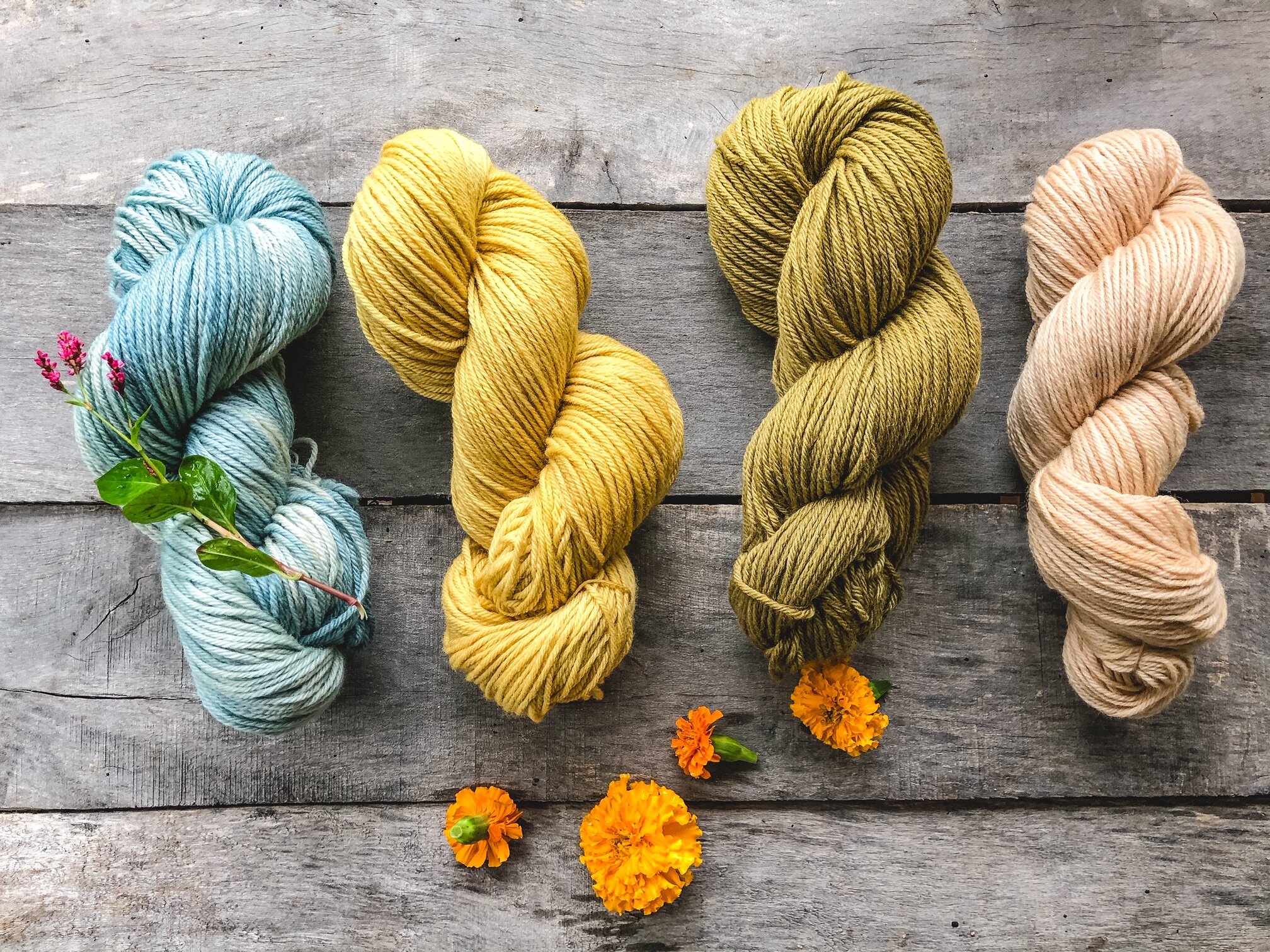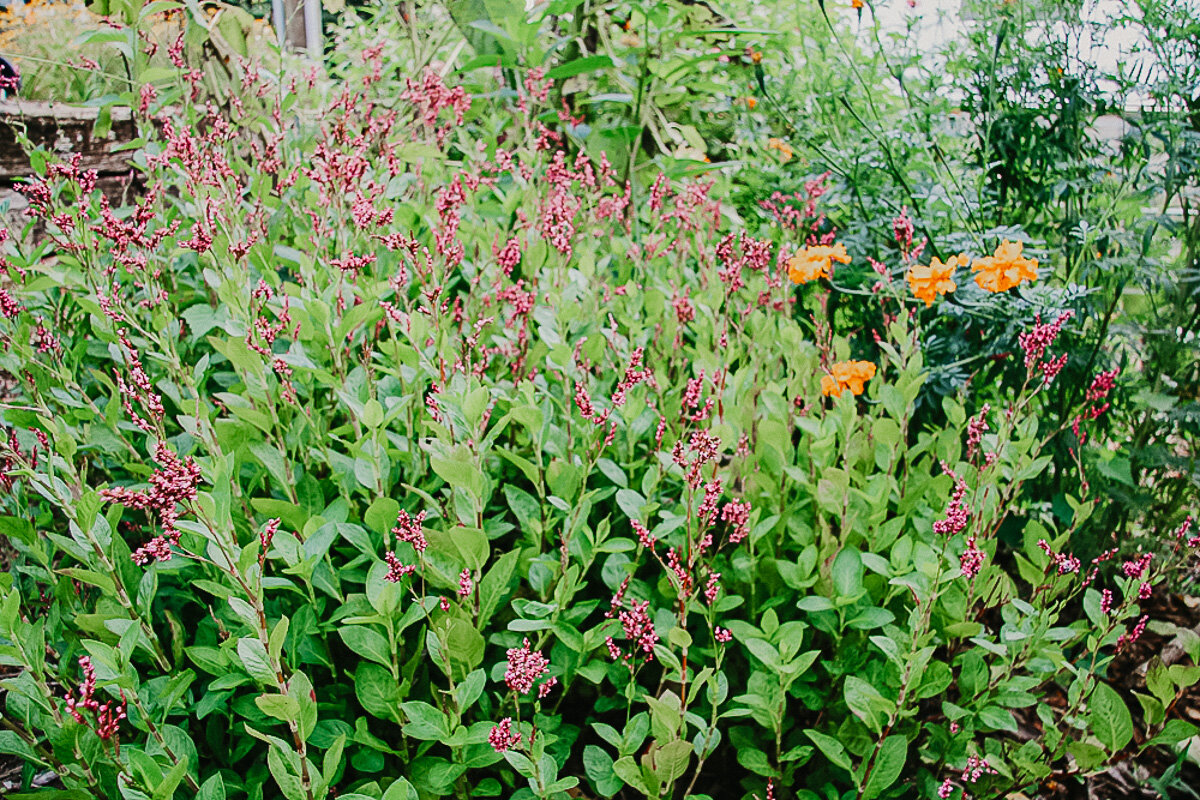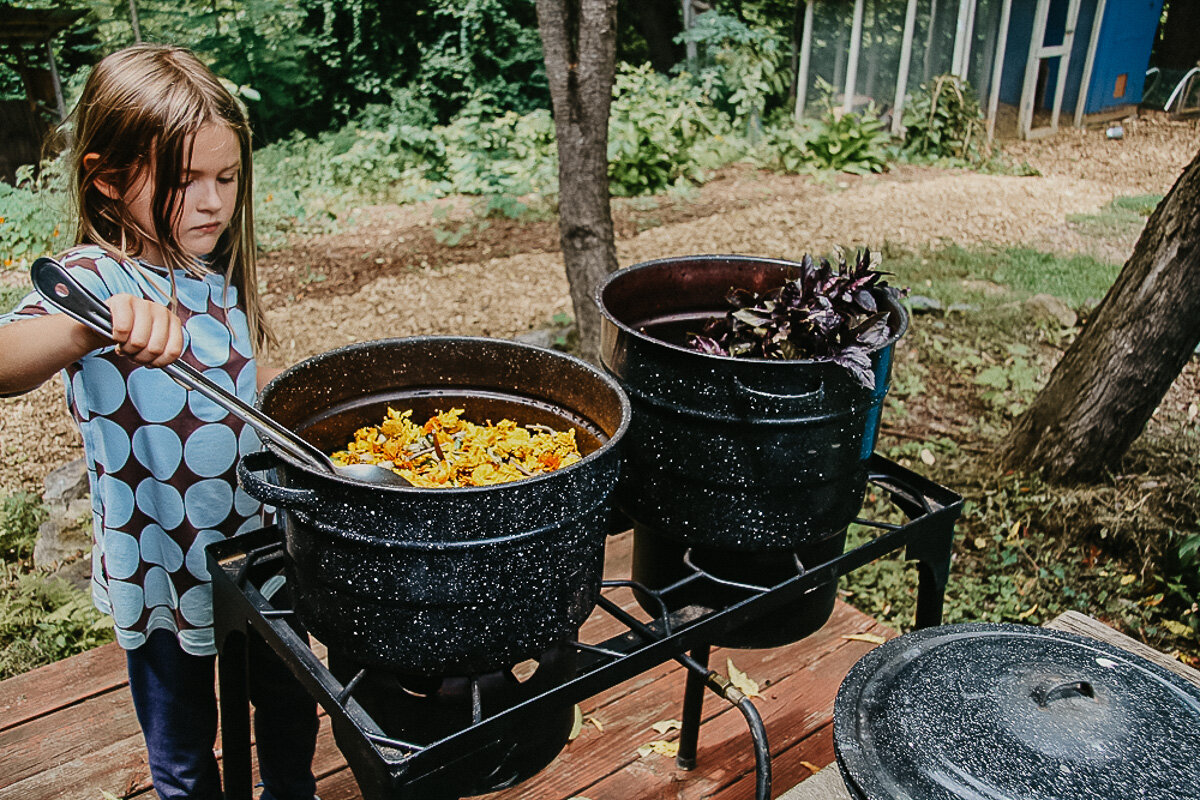Colors from the garden: Growing natural dyes
Guess what: in your own yard or garden, you can grow now just food and herbs, but also colors? As in, plants from which you can extract non-toxic, natural dye pigments for dyeing textiles, wool yarns, or even children's art supplies and soaps? If you have a yard or garden, chances are that you already have some plants there you could dye with. Some of the most common garden plants can be used as dyes since they release pigment when simmered in hot water:
marigold
Black-eyed Susan
coreopsis
tansy
purple basil
fennel
marjoram
onion (skins)
Even if you don't, many so-called weeds — plants that grow wild by the roadside or in wild patches — make great dyes:
stinging nettle
pokeweed
goldenrod
yarrow
You could easily get started with these plants. But if you're really drawn to the idea of über-local, non-chemical colors on your textiles, and if you have access to garden space, I encourage you to create a designated dye garden. You get to participate in the process of choosing your plants/colors, growing and tending them through a growing season, and then experimenting with different combinations, plant parts, time of harvest, and the various mordants and afterbaths that help to modify your colors. You'll be one step closer to a truly ecologically mindful wardrobe.
Planning Your Natural Dye Garden
Choose a site that gets good sun, ideally at least 6 hours a day. Decide on the shape of your dye garden area. It's better to start small the first year, and then expand later if you find that you can manage what you have so far.
Many dye plants tolerate poor soils, but they'll be more productive in rich soil. Prepare the soil as you would a vegetable garden bed: remove any plant debris and the sod, then dig deeply to loosen the soil. Work in compost, aged manure, or other organic matter to improve soil structure and drainage.
Then the fun begins: what plants — what colors — will you grow? Take a look at the list of common garden plants above: many of them are incredibly attractive as they bloom in the summer, and provide nectar for pollinators. Even if you just plant marigolds, Black-eyed Susans, zinnias, and purple basil, you'll have a striking flower bed all summer long, and can harvest colors ranging from sunny yellows to sweet pinks at the end of the season.
But besides these plants, there are some that are usually specifically grown as dye plants — and for a reason: they have unusually strong and colorfast pigments:
madder root (reds)
Japanese indigo (blues)
woad (blues)
weld (yellows)
You'll probably have to source the seeds or the plants from a specialist seed company or nursery (see Resources below). But it'll be worth it.
My Dye Garden
For me, choosing the location for my dye garden was easy. On one side of our property is our neighbors' retaining wall, built out of railroad ties that likely contain creosote. I've done enough research on creosote to not want to grow anything edible near them. So I turned that entire strip, behind and surrounding our greenhouse, into a dye garden.
In designing my dye garden, I started with a handful of dye plants that both look gorgeous in the garden, and make strong dyes: marigold (for yellow), weld (for yellow), madder root (for red and orange), Japanese indigo (for blues) and zinnia (for beige to light yellow).
In future years, I can easily expand and add new plants. Elsewhere in the garden, I also grow purple basil (for pink), fennel (for green/yellow), and stinging nettles (for green/yellow).
Here are a couple of my favorite dye plants that made their way into my dye garden plan without any hesitation.
Japanese indigo (Polygonum tinctorium) is, like the name indicates, a source of blue color. It has pretty pink flowers in the summer and the leaves can be harvested for the loveliest blues — not quite the strong dark blue of real indigo, but a strong dye nevertheless.
Space the plants about 10 inches apart. You can harvest the leaves several times in the course of the growing season.
Madder root (Rubia tinctorum) is an age-old dye plant (pigment from it was found on cloth in Pharaoh Tutankhamen's tomb!) for reds, ochres and oranges. As the name suggest, you harvest the dye from the root. Madder roots have to be minimum 3 years old before you can harvest a strong red dye from them. Madder is a sprawling, vigorous plant that will spread, so it's best if you either give it plenty of space, or plant it inside a raised bed box to confine the roots. Other than that, it's one of the easiest plants to grow: you can virtually ignore it and it will thrive.
At 6, my daughter is now old enough that we can work on dye projects together. We play witches, stirring potions in big pots and magically creating colors. I promised her that if we get a range of colors on wool yarn, I'll knit her a rainbow hat and mittens with colors from the garden.
So far we've got blue from Japanese indigo, yellow from marigold, green from marigold with iron afterbath, and pink from purple basil... We're well on our way!
Resources
Books on natural dyeing:
Rebecca Burgess, Harvesting Color: How to Find Plants and Make Natural Dyes
Jenny Dean, Wild Color: The Complete Guide to Making and Using Natural Dyes
Rita Buchanan, A Dyer’s Garden
Online suppliers of dye plant seeds and starts:
Strictly Medicinal Seeds: a starter pack of 7 dye plant seeds; also Madder root starts
Elizabeth Anonymous: Japanese indigo seeds
Etsy: many sellers of dye plant seeds






